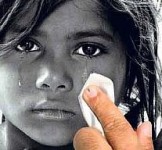TOI discovers Bharat

Second Take
Kalpana Sharma
The world over, newspapers have struggled to recast themselves in the face of competition from the electronic media and increasingly from the Internet. In the
Every newspaper went out of its way to simplify the budget, to give as much detail as possible, to explain some complex aspects through graphics, to translate the budget into the way it¿ll impact the aam admi etc.
In the past, many newspapers would reproduce a major part of the Finance Minister¿s budget speech. This was useful for those who wanted more specific details and not just the interpretation of the Budget. These days, this is rarely done given the cost of printing and newsprint and the downturn in the economy that has impacted the number of pages in most newspapers.
Some newspapers, like The Hindu, have compensated for this by putting this material on their web editions. In fact, The Hindu does a singular service to readers interested in more detail by uploading many documents on its site including commission reports – the latest being the Shopian rape case investigation.
If a survey was conducted the day after the Budget with lay readers and viewers of TV and they were asked what helped them to understand the Budget better, it is more than likely that the majority would refer to their daily newspaper.
In the face of the non-stop onslaught of electronic media, this is, in fact, the role the print media can play for a long time to come. Rather than competing with television, it can give the value addition that makes newspapers indispensable to the reader. Some newspapers are doing this better than others.
A surprising aspect of the Budget coverage this year was the front-page photograph and comment carried by Times of India. This paper has made no bones about its preoccupation with its upper class readership. The newspaper has been geared to meeting, what it deems to be the interests of this class. Hence, if it ignores or downplays news from other parts of the country, or about poverty and deprivation for instance, it has justified it in the name of this readership. It has argued that this class prefers to read about business, Bollywood, sport and a little bit of politics. The rest can wait.
Which is why the photograph of a girl with tears in her eyes on the front page, with a quote from Jawaharlal Nehru from his ¿Tryst with Destiny¿ speech of August 15, 1947 must have made even diehard critics of Times of India (TOI) sit up and take note. For those who missed it, the headline read: "It¿s for you and for her." The statement next to it stated that TOI¿s readers were "the cream of Indian society" and that the paper¿s interest in the Budget revolves around their immediate concerns. But, it goes on to state "there is another
So what has happened to the Grand Old Lady of Bori Bunder? Why this sudden change of heart, or a "Cinderella moment" as it likes to call it? Does this represent a tectonic shift in the preoccupations of a paper that believes it is the most read in the world? We will have to wait to see whether this is a one-off discovery of Bharat, or whether it actually dictates the newspaper¿s coverage. It should be noted that a few days after the Budget issue, TOI reporters tracked down the little girl whose photograph was used. Her name is Asha. She begs outside the ruins of Mandu in Madhya Pradesh. And she goes to the anganwadi centre only for the mid-day meal, not to learn anything. Her dream, she says, is to have ¿halwa¿ every day, something that¿s served only once a week.
Another item in TOI, that made this columnist sit up appeared a day before the Budget. Titled "Womenomics: Some lessons for the FM", the item brought in the women¿s perspective on budget making, something that many feminist economists have been arguing for decades. The item was a little simplistic, but it made the essential point that if a budget does not benefit women, it actually fails to serve the majority of people.
This column is not meant to be one singing paeans of praise for one newspaper. The above illustrations are being quoted merely to emphasise the point that the print media in